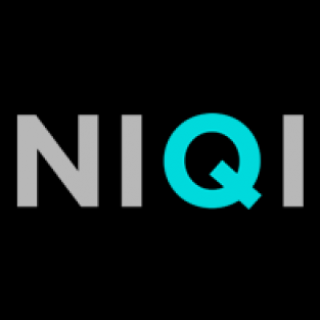人工智能在品牌推廣中的運(yùn)用。尋找創(chuàng)新算法。

It's relatively easy for AI to come up with rationalizable applications as assistant services, language understanding or image recognition, to name a few.
Even if the amount of variables and possibilities to be processed is huge, for these kind of services the algorithms can rely on a pretty solid logic framework.
對于人工智能而言,設(shè)計(jì)出諸如助手服務(wù)、語音識別以及圖像識別等基于邏輯的應(yīng)用程序相對容易。
對于這些服務(wù),即使算法需要處理大量的變量和可能性,仍然可以依賴于相當(dāng)堅(jiān)實(shí)的邏輯框架。
But what about the process of building a brand, which is strictly connected with creativity, and therefore generated by the intricate intersections, combinations and permutations of human understanding, cultures, emotions and personalities.
那么,建設(shè)一個(gè)品牌中的應(yīng)用呢?品牌建設(shè)與創(chuàng)意密切相關(guān),它是認(rèn)知、文化、情感和個(gè)性等復(fù)雜交織、組合和排列的結(jié)果。
"Can we take what humans think is creative and try to put that into an algorithm? I don't think it's going to be possible for quite a while. ” Says Jason Toy, the CEO of Somatic, one of the most sophisticated AI platforms available.
Somatic(目前最成熟的人工智能平臺之一)首席執(zhí)行官Jason Toy曾說:“我們能把人類認(rèn)為有創(chuàng)意的事物放進(jìn)算法里嗎?相當(dāng)長一段時(shí)間里,我都認(rèn)為這不可能。”
I think the real question is: should replacing human creativity be the goal of AI even if it was technically feasible?
我認(rèn)為真正的問題在于:即使技術(shù)上可以實(shí)現(xiàn),但代替人類創(chuàng)造力應(yīng)該是人工智能的目標(biāo)嗎?
Seeking an answer to that dilemma I've been exploring potential roles of Artificial Intelligence in the creative process of communicating a brand.
為了找到答案,我一直在探索人工智能在品牌傳播過程中的應(yīng)用。
I found it easier to start with a reverse engineering approach: by analyzing an existing successful branding case from an AI brain point of view, and observing what the artificial intelligence could understand and distill out of it. The learnings can be used to define the AI role in creating new brands.
我發(fā)現(xiàn)從逆向的角度開始探索更加容易,即:通過人工智能分析已經(jīng)取得成功的品牌推廣項(xiàng)目,查看人工智能能夠從中理解并提煉出哪些有用信息。
案例結(jié)論可以用來定義人工智能在品牌傳播過程中的應(yīng)用。
For this particular experiment, I utilized Watson, the IBM AI platform.
在這一特定案例分享中,我使用了IBM人工智能平臺Watson。
Watson provides a so called "empathy" algorithm, able to understand personalities and tonalities by analyzing words and sentences.
Watson提供了一種所謂的“empathy”算法,它能通過分析單詞和句子了解個(gè)性和通調(diào)。

I applied the Watson "empathy" algorithm to the historical Apple 1997 campaign "Think Different".
我將Watson的“empathy” 算法用在1997年蘋果公司的 “Think Different” Campaign視頻中。
For who isn't familiar with that creative masterpiece, here is the full TVC version.
如果你還不熟悉這一創(chuàng)意作品,以下是完整的TVC供觀看。
I asked to Watson "empathy" algorithm a summary (in terms of personality and tonality) of the TVC, and this what I got:
我向Watson AI索要了其對該TVC的總結(jié)(個(gè)性和通調(diào)方面),我得到了以下答案:

We can talk about branding only when the communication embodies the personality of the brand. So the next natural step of this experiment was to get Watson 'feel" the Apple brand.
In order to do so, I fed the algorithm with the famous Jobs' 2005 Stanford speech, which says a lot about Apple's spirit.
我們談?wù)揵randing是因?yàn)閭鞑ブ畜w現(xiàn)了品牌個(gè)性,因此,案例的下一步自然是讓W(xué)atson“感知”蘋果公司的品牌。
為了做到這一點(diǎn),我將充分體現(xiàn)了蘋果精神的喬布斯2005年在斯坦福大學(xué)的演講加入了這個(gè)算法。
Here is what Watson thinks about the personality behind this speech.
下面的結(jié)果是Watson對這篇演講personality的分析

In the Watson summaries, we can identify strong similarities between the brand communication (TVC) and the brand spirit.
在Watson的總結(jié)中,我們可以發(fā)現(xiàn)品牌傳播(TVC)和品牌精神之間的高度一致性。
Only by seeing a TVC and listening to a brand founder speech, Watson was able to identify the keywords that are at the core of the Apple brand:
Watson通過TVC以及品牌創(chuàng)始人的演講,能識別出蘋果品牌核心的關(guān)鍵字
(下面紅色框出部分)

With the 3rd step of the experiment, I wanted a Watson opinion about the famous people featured in the TVC. Mahatma Gandhi for example.
第三步,“Think Different”TVC中所選擇的人物是否契合品牌通調(diào)呢?我們以Mahatma Gandhi為例,看watson會給出怎樣的答案:
I provided to Watson's brain over 12,000 words from an autobiographical book by Gandhi.
我向Watson的大腦輸入了Gandhi的一萬兩千多字的一本自傳
And this is what Watson came up about Gandhi personality and tone.
以下是Watson對Gandhi個(gè)人畫像的結(jié)論:(重點(diǎn)紅色框出部分)

Clearly, Brand, TVC and chosen ambassador, have a lot of key things in common, as it is supposed to be in a good brand strategy.
從以上不同角度測試結(jié)論中,各圍度的高度一致性清楚看到,一個(gè)優(yōu)秀的品牌策略,不論是campaign創(chuàng)意、對外PR、所用的明星或KOL都是圍繞品牌核心利益點(diǎn)進(jìn)行溝通的。
But Most importantly, we see that Watson was able to distill the shared keywords at the core of the brand, the TVC and the people in it!
最重要的是,Watson能提取出品牌、TVC和片中人物所包含的共同關(guān)鍵詞。
I could carry further the experiment, but to me the learning is pretty clear.
這個(gè)實(shí)驗(yàn)我會繼續(xù)深入下去。但于我而言,學(xué)到的已經(jīng)非常清楚。
If an AI is able to 'get' the essence of a brand by analyzing an existing case, we can suppose that it could help also in the process of building a brand, when the case is being created.
如果人工智能能夠通過分析一個(gè)即有的案例來“獲得”品牌的精髓,我們可以推想在創(chuàng)建項(xiàng)目之前,它還可以在品牌建設(shè)的過程中發(fā)揮作用。
How we perceive Apple today, might sound obvious to us. But if we try to project ourselves in the time when Apple was just a fruit name, and we try to imagine how hard must have been to spread consistently those core values that now we all know, in that perspective, Watson preliminary intuitions could have been extremely valuable.
如今,人們?nèi)绾慰创O果已經(jīng)毋庸置疑。但試想,在“蘋果”僅僅是一種水果名的時(shí)代,要改變大眾的認(rèn)知持續(xù)傳播品牌價(jià)值觀是多么困難。從這一角度來看,Watson初步的直覺就顯得非常有價(jià)值。
In other words, creatives could have used AI to analyze the brand DNA (in case of an uncertain brand positioning, they could have analyzed just the founder vision!), TVC scripts options, and possible celebrities featured in it. At a very early stage of the campaign creation, AI could have provided inputs to explore and adjust accordingly the communication in order to match the core values.
換句話說,創(chuàng)意團(tuán)隊(duì)可以使用人工智能對品牌DNA(在品牌定位不確定的情況下,可以僅分析創(chuàng)始人的愿景)、TVC腳本以及其中可能出現(xiàn)的名人進(jìn)行分析。在Campaign初期,人工智能可以提供數(shù)據(jù)來探討和調(diào)整品牌傳播策略,以匹配品牌核心關(guān)鍵詞。
In that sense, AI could be an inspirational source for creatives to explore variegate territories with the guide of an "empathetic" algorithm who doesn't let them get lost in the sea of the imagination.
從這層意義上來看,人工智能可能是創(chuàng)意團(tuán)隊(duì)在“empathetic”算法的指導(dǎo)下探索不同領(lǐng)域的靈感源泉,而這種算法使得創(chuàng)意不會跑偏。
Quoting Rob High, Vice President and CTO of IBM Watson: "What I'm looking for out of cognitive systems is not just another form of computing but something that actually creates a presence in our life and through that presence is able to inspire us.”
借用IBM副總裁兼首席技術(shù)官Rob High的話說:
“我想從認(rèn)知系統(tǒng)中尋找的不僅僅是另一種計(jì)算形式,而是一種能夠創(chuàng)造生活存在的東西。通過這種存在,能激勵(lì)我們繼續(xù)前行。”
Nick Landucci.
Co-founder and CCO, NIQI
NIQI聯(lián)合創(chuàng)始人兼首席創(chuàng)意官





評論
評論
推薦評論
暫無評論哦,快來評論一下吧!
全部評論(0條)